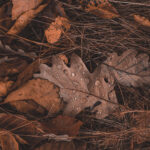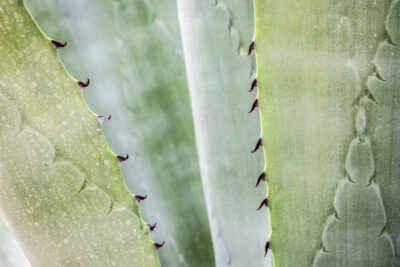
Protecting Outdoor Succulents in Heavy Rain: Essential Tips

Outdoor succulents are a popular choice for many gardeners due to their unique and diverse shapes, colors, and low-maintenance requirements. However, heavy rain can pose a challenge for these plants, as they are not adapted to withstand excessive moisture. It is important for succulent owners to take precautions to protect their plants during periods of heavy rainfall to prevent damage or even death.
We will discuss essential tips for protecting outdoor succulents during heavy rain. We will explore the reasons why succulents are vulnerable to excessive moisture and the potential consequences of neglecting their needs during rainy seasons. Additionally, we will provide practical advice on how to shield succulents from rain, including the use of protective covers, proper drainage techniques, and strategic placement. By following these tips, succulent enthusiasts can ensure the health and longevity of their outdoor plants, even in the face of heavy rainfall.
- Use well-draining soil to prevent waterlogging
- Provide proper shelter or cover during heavy rain
- Avoid overwatering before heavy rain to prevent root rot
- Create a slope or raised bed to promote water drainage
- Use pots with drainage holes to prevent water accumulation
- Trim off any damaged or rotting leaves or stems
- Apply a waterproofing spray or sealant to pots or containers
- Use a rain gauge to monitor rainfall and adjust watering accordingly
- Move vulnerable succulents indoors during heavy rainstorms
- Check for signs of fungal or bacterial infections and treat accordingly
- Frequently Asked Questions
Use well-draining soil to prevent waterlogging
One of the most crucial steps in protecting your outdoor succulents during heavy rain is to ensure you use well-draining soil. Succulents are adapted to thrive in arid conditions, where water is scarce. When exposed to excessive moisture, their roots can become waterlogged, leading to root rot and ultimately the death of the plant.
To avoid this, opt for a well-draining soil mix specifically formulated for succulents. These mixes typically contain a combination of materials such as sand, perlite, or coarse gravel, which allow excess water to flow through freely. The porous nature of the soil helps prevent water from pooling around the roots, reducing the risk of rot.
When planting your succulents, make sure to choose containers with drainage holes to further facilitate water drainage. If you're planting in the ground, consider amending the soil with organic matter or improving the drainage of the area to create a suitable environment for your succulents.
Tip: If you're unsure about the drainage capabilities of your soil, a simple test can help. Dig a small hole, roughly 6 inches deep, and fill it with water. If the water drains away within an hour, your soil has good drainage. If it takes longer, you may need to work on improving it.
 How to Safely Clean Succulent Leaves: A Step-by-Step Guide
How to Safely Clean Succulent Leaves: A Step-by-Step GuideProvide proper shelter or cover during heavy rain
Protecting your outdoor succulents during heavy rain is essential to prevent damage and ensure their survival. Here are some tips to help you provide the necessary shelter or cover:
- Move your succulents indoors: If you have potted succulents, it's best to bring them indoors during heavy rain. This will shield them from excessive water exposure and potential damage caused by strong winds. Find a well-lit area in your home or near a window where they can continue to receive adequate sunlight.
- Utilize shade cloths or umbrellas: For succulents planted in the ground, using shade cloths or umbrellas can help protect them from heavy rainfall. Position these covers strategically to shield your plants from direct rainfall and reduce the risk of waterlogging.
- Create a temporary rain shelter: In cases where you don't have the option to move your succulents indoors or use shade cloths, consider creating a temporary rain shelter. This can be achieved by using materials such as plastic sheets, tarpaulins, or even an old umbrella. Ensure that the shelter is securely placed and properly anchored to prevent it from being blown away by strong winds.
Remember, succulents are adapted to arid conditions and are susceptible to root rot if exposed to excessive moisture for prolonged periods. By providing them with proper shelter or cover during heavy rain, you can protect them from potential damage and ensure their continued health and resilience.
Avoid overwatering before heavy rain to prevent root rot
One of the most important tips for protecting outdoor succulents in heavy rain is to avoid overwatering them prior to the rainfall. Succulents are known for their ability to store water in their leaves, stems, or roots, allowing them to survive in arid conditions. However, excessive water can be detrimental to their health, especially when combined with heavy rain.
When succulents are already saturated with water, the additional rainfall can lead to root rot, a condition caused by fungi and bacteria that thrive in wet environments. Root rot can quickly spread throughout the plant, causing the roots to decay and ultimately leading to the death of the succulent.
To prevent root rot, it is crucial to ensure that the soil is dry before heavy rain. Succulents should be watered sparingly, only when the soil is completely dry. This allows the roots to absorb water without being saturated, reducing the risk of root rot.
Provide proper drainage for outdoor succulents
Another essential tip for protecting outdoor succulents in heavy rain is to provide proper drainage for them. Succulents thrive in well-draining soil, as it allows excess water to flow away from the roots, preventing waterlogging.
 Fertilizing Succulents: To Do or Not in the Growing Season?
Fertilizing Succulents: To Do or Not in the Growing Season?When planting succulents in the ground or in pots, it is important to ensure that the soil has good drainage. This can be achieved by adding coarse sand or perlite to the soil mix, which helps to improve aeration and drainage. Additionally, elevating the pots on feet or using pot saucers with drainage holes can aid in preventing water from accumulating around the roots.
During heavy rain, it is essential to ensure that the water has a way to escape from the planting area. Avoid planting succulents in low-lying areas or areas prone to flooding. If necessary, create raised beds or mounds to improve drainage and prevent water from pooling around the plants.
Provide shelter or cover for outdoor succulents
Providing shelter or cover for outdoor succulents can help protect them from the direct impact of heavy rain. Succulents are adapted to withstand periods of drought and intense sunlight, but they may struggle when exposed to excessive rainfall.
Consider using umbrellas, plastic covers, or even constructing temporary shelters using stakes and plastic sheets to shield succulents from heavy rain. Ensure that the cover allows for airflow and does not trap moisture, as this can create a humid environment that promotes fungal growth.
It is important to note that while providing shelter can help protect succulents from heavy rain, it is crucial to remove the cover once the rain has subsided. Allowing the succulents to dry out properly after rainfall is essential to prevent the onset of rot or other moisture-related issues.
Inspect and treat for pests and diseases
Heavy rain can create favorable conditions for the proliferation of pests and diseases that can harm succulents. Excessive moisture can attract pests like snails, slugs, and aphids, while also promoting the growth of fungal and bacterial diseases.
Regularly inspect your succulents for signs of pests or diseases, such as holes in the leaves, discoloration, or unusual spots. If any issues are detected, promptly treat the affected plants using appropriate methods, such as using organic insecticides or fungicides.
 Troubleshooting Tips: How to Fix a Tall and Falling Over Succulent
Troubleshooting Tips: How to Fix a Tall and Falling Over SucculentProtecting outdoor succulents in heavy rain requires attention to watering practices, ensuring proper drainage, providing shelter, and maintaining a vigilant watch for pests and diseases. By implementing these essential tips, you can help your succulents thrive even during periods of heavy rainfall.
Create a slope or raised bed to promote water drainage
If you want to protect your outdoor succulents from heavy rain, one essential tip is to create a **slope** or **raised bed** in your garden. This will help promote water drainage and prevent waterlogged soil, which can be detrimental to the health of your succulents.
When heavy rain occurs, the excess water needs to be able to flow away from the roots of your succulents. By creating a **slope** or **raised bed**, you can ensure that the water drains away efficiently and doesn't stay stagnant around the plants.
To create a **slope**, you can gently mound the soil in your garden, gradually sloping it away from your succulents. This will encourage the water to flow downhill and away from the plants.
If you prefer a more structured approach, you can build a **raised bed** for your succulents. This involves constructing a box-like structure using wood, stones, or bricks and filling it with well-draining soil. By elevating your succulents in a **raised bed**, you can ensure that excess water drains away quickly.
Remember to position your **slope** or **raised bed** in a way that allows water to flow freely without causing any damage to your succulents or other plants in the surrounding area.
Use well-draining soil
Another crucial tip for protecting your outdoor succulents in heavy rain is to use **well-draining soil**. Succulents thrive in soil that allows water to pass through quickly, preventing the roots from sitting in wet conditions for too long.
 Understanding Winter Leaf Drop: Why Do Succulent Leaves Fall Off?
Understanding Winter Leaf Drop: Why Do Succulent Leaves Fall Off?When choosing soil for your succulents, opt for a gritty mix that contains ingredients such as perlite, pumice, or sand. These additives help create air pockets in the soil, improving drainage and preventing water accumulation around the roots.
Avoid using heavy clay-based soils or those formulated for moisture-loving plants, as they can retain too much water and lead to root rot in succulents.
Provide shelter or cover during heavy downpours
If you anticipate heavy rain, it can be beneficial to provide **shelter or cover** for your outdoor succulents. This can help prevent direct exposure to excessive rainfall, which can potentially damage the delicate leaves and stems of the plants.
You can use various forms of shelter, such as garden umbrellas, plastic or glass covers, or even move your potted succulents indoors temporarily during heavy downpours. By offering protection from the rain, you can minimize the risk of your succulents getting waterlogged or experiencing rotting issues.
It's important to note that after the heavy rain has subsided, you should remove the shelter or cover to allow proper airflow and prevent excessive moisture buildup.
Inspect and remove any damaged or rotting leaves
After heavy rain, it's crucial to inspect your outdoor succulents for any signs of damage or rotting leaves. Excessive moisture can create a favorable environment for fungal or bacterial diseases, which can quickly spread among your plants.
If you notice any leaves that have become mushy, discolored, or slimy, it's essential to remove them immediately. Use clean and sharp scissors or pruning shears to carefully trim off the affected leaves, ensuring that you make clean cuts to minimize the risk of further damage.
 Low-Maintenance Succulents That Mimic Cacti: A Guide to Easy Care
Low-Maintenance Succulents That Mimic Cacti: A Guide to Easy CareBy promptly removing damaged or rotting leaves, you can prevent the spread of disease and help your succulents recover more effectively.
- Keep an eye on weather forecasts and prepare in advance
- Consider using a well-draining potting mix for potted succulents
- Water your succulents sparingly to avoid excess moisture
- Ensure proper airflow around your succulents to prevent humidity buildup
Use pots with drainage holes to prevent water accumulation
When it comes to protecting outdoor succulents in heavy rain, one of the most important things to consider is ensuring proper drainage. Succulents are known for their ability to store water in their leaves and stems, making them more susceptible to root rot if they sit in waterlogged soil for extended periods.
To prevent water accumulation, it is crucial to use pots with drainage holes. These holes allow excess water to escape, ensuring that the soil doesn't become too saturated. When selecting pots for your succulents, make sure they have sufficient drainage holes at the bottom.
Additionally, consider using pots made from porous materials such as terracotta or unglazed ceramic. These materials allow for better airflow and water evaporation, reducing the risk of overwatering during heavy rainfall.
Remember, if your succulents are already potted in containers without drainage holes, it is essential to repot them into suitable pots. This simple step can significantly improve the chances of your succulents surviving heavy rain.
Key points:
 Proper Care and Maintenance of a Cat's Tail Succulent
Proper Care and Maintenance of a Cat's Tail Succulent- Choose pots with drainage holes to prevent water accumulation.
- Opt for porous materials like terracotta or unglazed ceramic.
- Repot succulents if they are in containers without drainage holes.
Trim off any damaged or rotting leaves or stems
When heavy rain is in the forecast, it's important to take proactive steps to protect your outdoor succulents. One of the first things you should do is trim off any damaged or rotting leaves or stems. This will help prevent further decay and ensure that your succulents stay healthy and strong.
Apply a waterproofing spray or sealant to pots or containers
One of the essential tips for protecting your outdoor succulents during heavy rain is to apply a waterproofing spray or sealant to their pots or containers. This extra layer of protection helps to prevent excessive moisture from seeping into the soil and causing damage to the roots.
When selecting a waterproofing spray or sealant, make sure to choose one that is specifically designed for outdoor use and is safe for plants. Look for products that are water-resistant and provide a long-lasting barrier against moisture. You can find these sprays or sealants at your local gardening store or online.
To apply the waterproofing spray or sealant, carefully read and follow the instructions on the product label. Start by ensuring that the pots or containers are clean and dry. Then, evenly spray or brush the sealant onto the exterior surfaces of the pots, including the bottom. Pay extra attention to the areas where water is likely to accumulate, such as the drainage holes.
Allow the sealant to dry completely before placing your succulents back in the pots or containers. This drying process usually takes a few hours, but it's important to follow the manufacturer's instructions for the specific product you're using.
 Can Succulents Survive Winter Outdoors Without Protection?
Can Succulents Survive Winter Outdoors Without Protection?By applying a waterproofing spray or sealant to your succulent pots or containers, you create an additional layer of protection against heavy rain. This helps to prevent waterlogged soil and potential root rot, ensuring the health and longevity of your outdoor succulents.
Use a rain gauge to monitor rainfall and adjust watering accordingly
One of the most important steps in protecting outdoor succulents during heavy rain is to use a rain gauge to monitor the amount of rainfall in your area. This simple tool will help you determine if your succulents are receiving too much water and if any adjustments need to be made to your watering routine.
It is crucial to understand that succulents are adapted to thrive in arid conditions and have a low tolerance for excessive moisture. Heavy rain can lead to overwatering, which can cause root rot and other water-related issues.
By regularly checking the rain gauge, you can keep track of the amount of rainfall your succulents are exposed to. If the rain gauge shows that your succulents have received a significant amount of water, you may need to adjust your watering schedule accordingly.
Remember, it is always better to underwater succulents than to overwater them. Succulents are designed to store water in their leaves, stems, and roots, allowing them to survive in drought-like conditions. Therefore, they can tolerate short periods without water much better than prolonged exposure to excessive moisture.
When adjusting your watering routine, be sure to take into account other factors such as the type of soil and the drainage capacity of your pots or garden beds. Well-draining soil and containers with drainage holes are essential for preventing waterlogged conditions.
Overall, using a rain gauge to monitor rainfall and adjusting your watering schedule accordingly is a proactive measure to protect your outdoor succulents from the potential harm caused by heavy rain.
 Is My Succulent Dying If All The Leaves Have Fallen Off?
Is My Succulent Dying If All The Leaves Have Fallen Off?Move vulnerable succulents indoors during heavy rainstorms
When heavy rainstorms are on the horizon, it is crucial to take precautionary measures to protect your outdoor succulents. While these resilient plants can withstand some rainfall, excessive water can be detrimental to their health. One of the best ways to shield your succulents from heavy rain is by moving them indoors.
Indoor spaces, such as a covered patio, greenhouse, or even a sunny windowsill, provide a sheltered environment where succulents can stay dry during downpours. This simple step can prevent waterlogged soil, root rot, and other issues that can arise from excessive moisture.
Identify vulnerable succulents
Not all succulents are equally susceptible to damage from heavy rain. Some varieties, such as Sempervivum and Sedum, are naturally more tolerant of moisture and can handle brief exposure to rain. However, other types, like Echeveria and Crassula, are more sensitive and prone to rotting when exposed to too much water.
To determine which succulents need extra protection, consider their natural habitat. Succulents native to arid regions, such as deserts, are generally less tolerant of heavy rainfall. Additionally, succulents with fleshy leaves and stems are more likely to retain water and suffer from overhydration.
Create a temporary rain shelter
If moving all your vulnerable succulents indoors is not feasible, another option is to create a temporary rain shelter. This can be achieved by using materials like plastic sheeting, tarps, or even an old umbrella. Simply position the shelter above the susceptible succulents to shield them from direct rainfall.
When setting up the rain shelter, ensure that it is securely anchored to prevent it from blowing away in strong winds. Be mindful of allowing some airflow to prevent the accumulation of humidity, which can lead to fungal diseases.
 Care Guide for Small Potted Succulents: Low-Maintenance Beauty
Care Guide for Small Potted Succulents: Low-Maintenance BeautyImprove drainage around succulents
Another essential step in protecting your outdoor succulents during heavy rain is to improve the drainage around their root zone. Succulents are adapted to thrive in well-draining soil, so excess water can quickly become problematic.
Start by ensuring that your succulents are planted in a suitable, fast-draining potting mix. Consider adding materials like perlite or coarse sand to improve drainage. If your succulents are planted directly in the ground, you can amend the soil with organic matter or create raised beds to enhance drainage.
Additionally, check the condition of your succulent's containers. Ensure that they have drainage holes and that water can freely escape from the bottom. If necessary, you can even elevate the pots slightly using pot feet or bricks to prevent water from pooling.
Remember, proper drainage is essential to prevent root rot and other moisture-related issues that can harm your succulents.
Monitor weather forecasts and adjust care accordingly
Lastly, it is crucial to stay informed about upcoming weather conditions. Keep an eye on weather forecasts, especially during the rainy season, to anticipate heavy rainstorms.
By monitoring the weather, you can take necessary actions in advance, such as moving your succulents indoors or providing temporary rain shelters. Being proactive can significantly reduce the risk of damage caused by heavy rainfall.
Remember, succulents are resilient plants, but they still need your care and attention to thrive. By implementing these essential tips, you can protect your outdoor succulents during heavy rainstorms and ensure their long-term health and beauty.
 The Ultimate Succulent Dormancy Table: Your Best Resource!
The Ultimate Succulent Dormancy Table: Your Best Resource!Check for signs of fungal or bacterial infections and treat accordingly
Check for signs of fungal or bacterial infections and treat accordingly
One of the primary concerns when it comes to heavy rain and outdoor succulents is the increased risk of fungal or bacterial infections. These infections can thrive in the damp and moist conditions created by heavy rainfall, potentially damaging or even killing your beloved succulents. Therefore, it is crucial to regularly inspect your plants for any signs of infection and take necessary action to prevent the spread.
Here are some essential tips to help you protect your outdoor succulents from fungal or bacterial infections during heavy rain:
- Remove infected leaves or plants: If you notice any signs of infection, such as discolored, mushy, or rotting leaves, it is essential to promptly remove them. This will not only prevent the infection from spreading to healthy parts of the plant but also improve its overall appearance.
- Isolate infected plants: If you have multiple succulents in close proximity, it is crucial to isolate any infected plants. This will minimize the chances of the infection spreading to healthy plants nearby. Consider temporarily moving the infected plant to an area where it can receive proper care and attention.
- Apply appropriate fungicides or bactericides: Utilize specialized treatments, such as fungicides or bactericides, to combat the specific infection affecting your succulents. These products are readily available at garden centers or can be purchased online. Follow the instructions carefully and apply the treatment as recommended.
- Improve air circulation: Good air circulation is essential for preventing the growth and spread of fungal or bacterial infections. Avoid overcrowding your succulents and ensure they have enough space between them. Prune any overgrown or overlapping branches to allow better airflow.
- Adjust watering practices: During heavy rain, succulents may absorb more moisture than necessary, leading to root rot and increased vulnerability to infections. Adjust your watering practices accordingly by reducing the frequency and amount of water. Succulents generally prefer well-draining soil, so ensure the excess water can easily drain away.
By following these tips, you can significantly minimize the risk of fungal or bacterial infections in your outdoor succulents during heavy rain. Prevention and early detection are key to maintaining the health and beauty of your succulent collection, allowing them to thrive even in challenging weather conditions.
Frequently Asked Questions
1. Can succulents survive heavy rain?
Yes, succulents can survive heavy rain, but too much water can cause root rot and other issues. Proper drainage and protection are important.
2. How can I protect my outdoor succulents during heavy rain?
Place your succulents under a covered area or use a temporary shelter like an umbrella to shield them from excessive rainfall.
3. Should I bring my outdoor succulents indoors during heavy rain?
Bringing your outdoor succulents indoors during heavy rain is a good idea to protect them from water damage. Just make sure they receive enough light.
4. How often should I water my succulents after heavy rain?
Allow the soil to dry out completely before watering your succulents again. Depending on the climate, this may take a few days to a week.
If you want to read more articles similar to Protecting Outdoor Succulents in Heavy Rain: Essential Tips, you can visit the Care and Maintenance category.






You Must Read